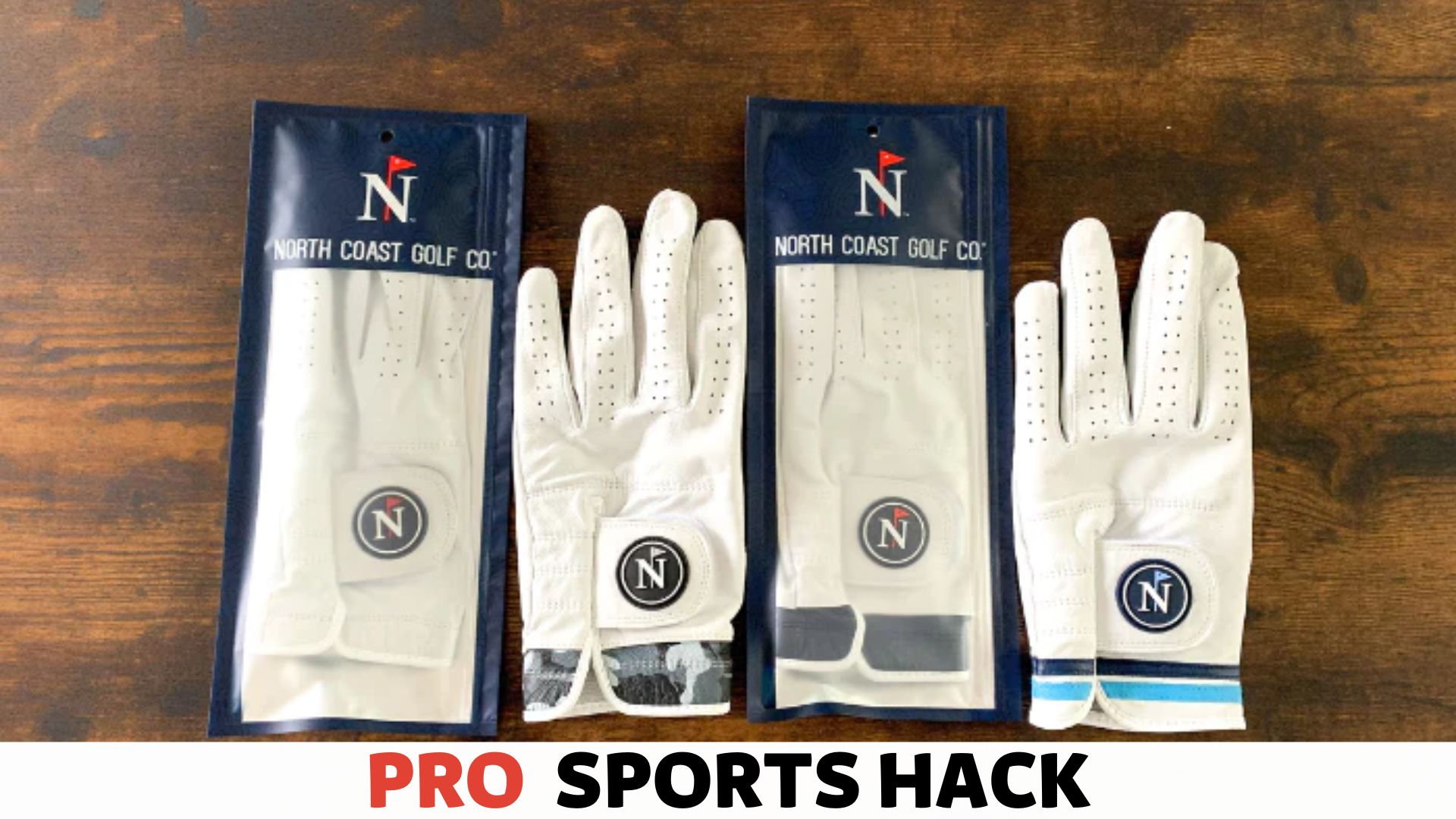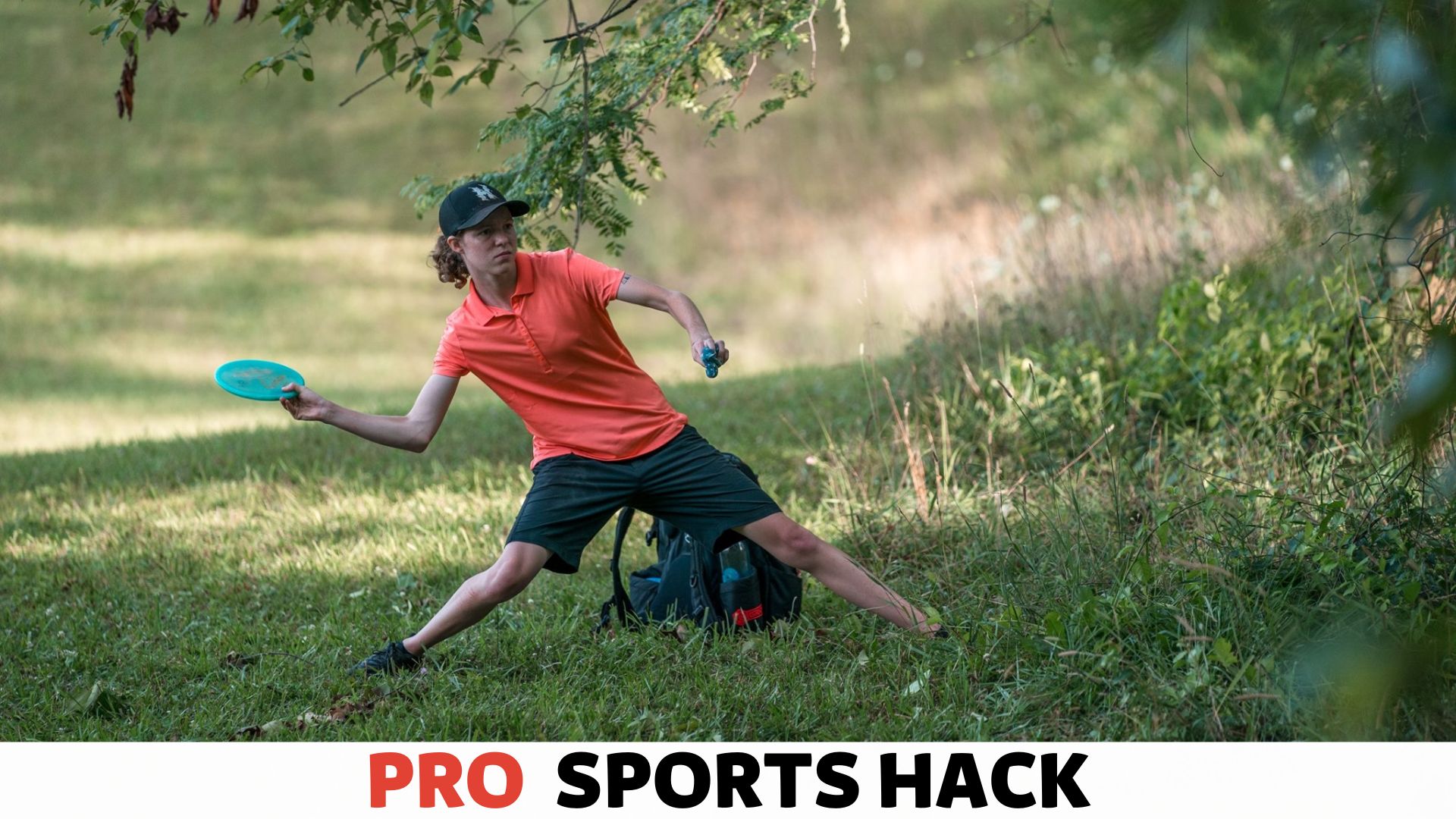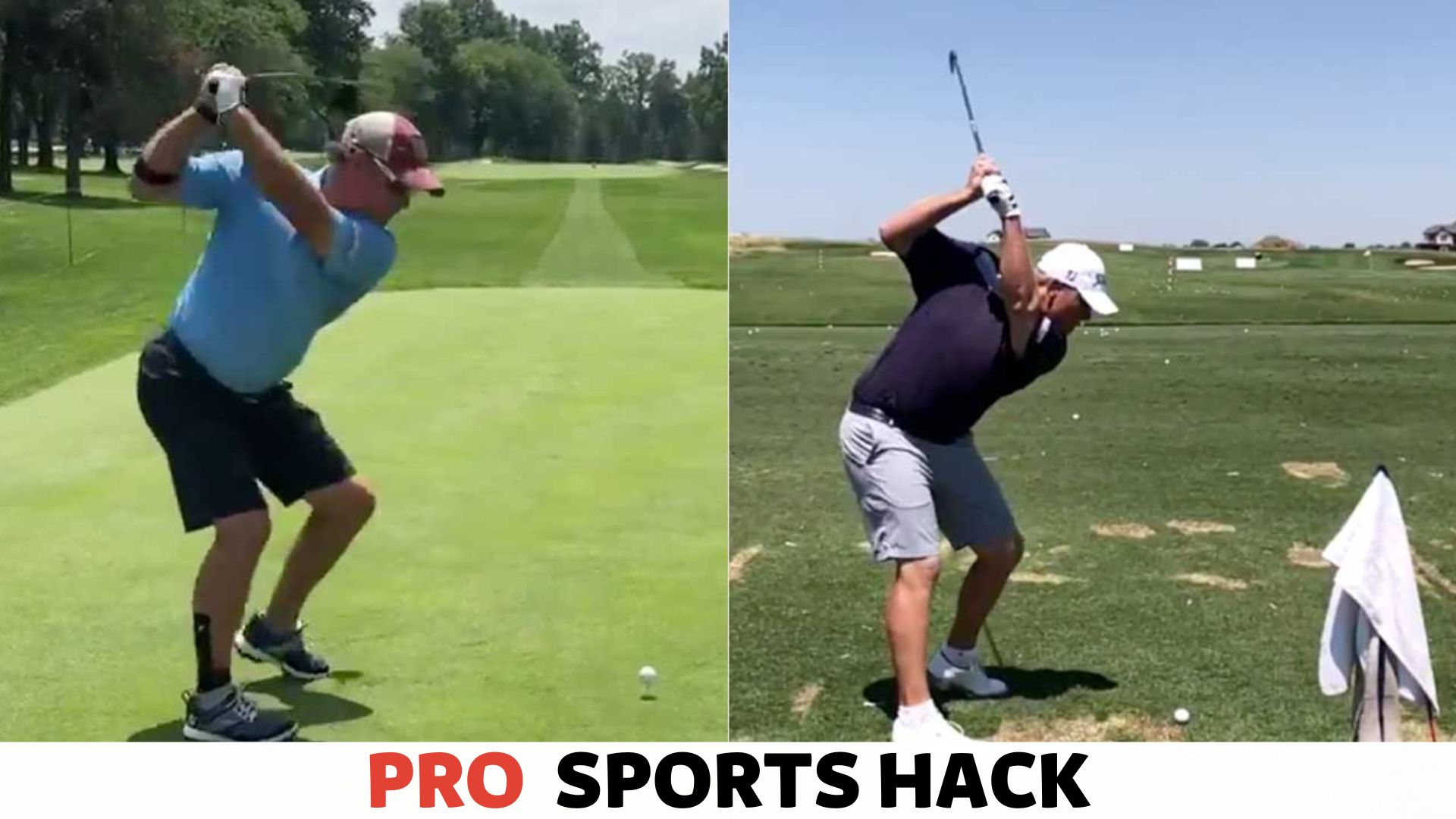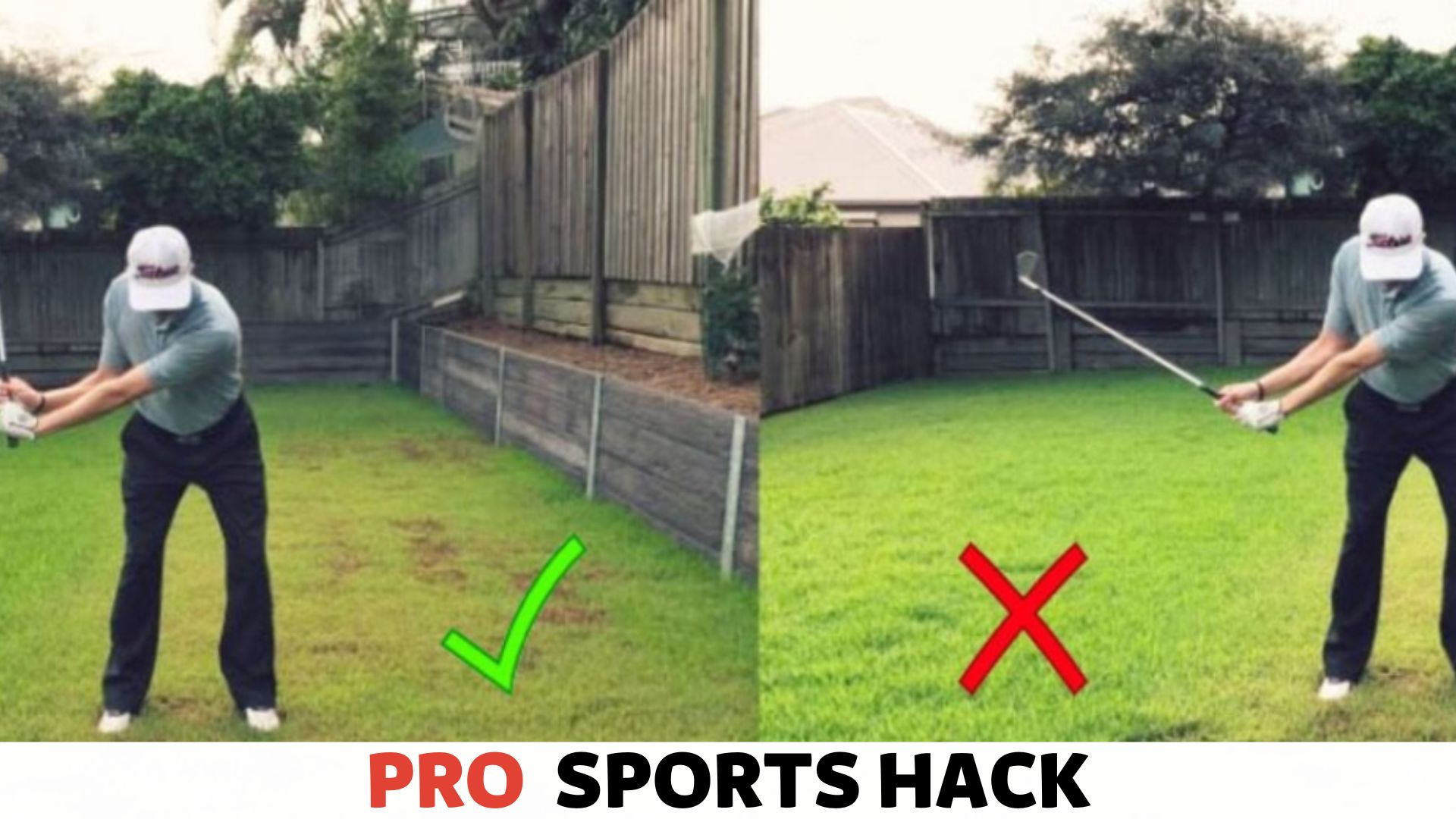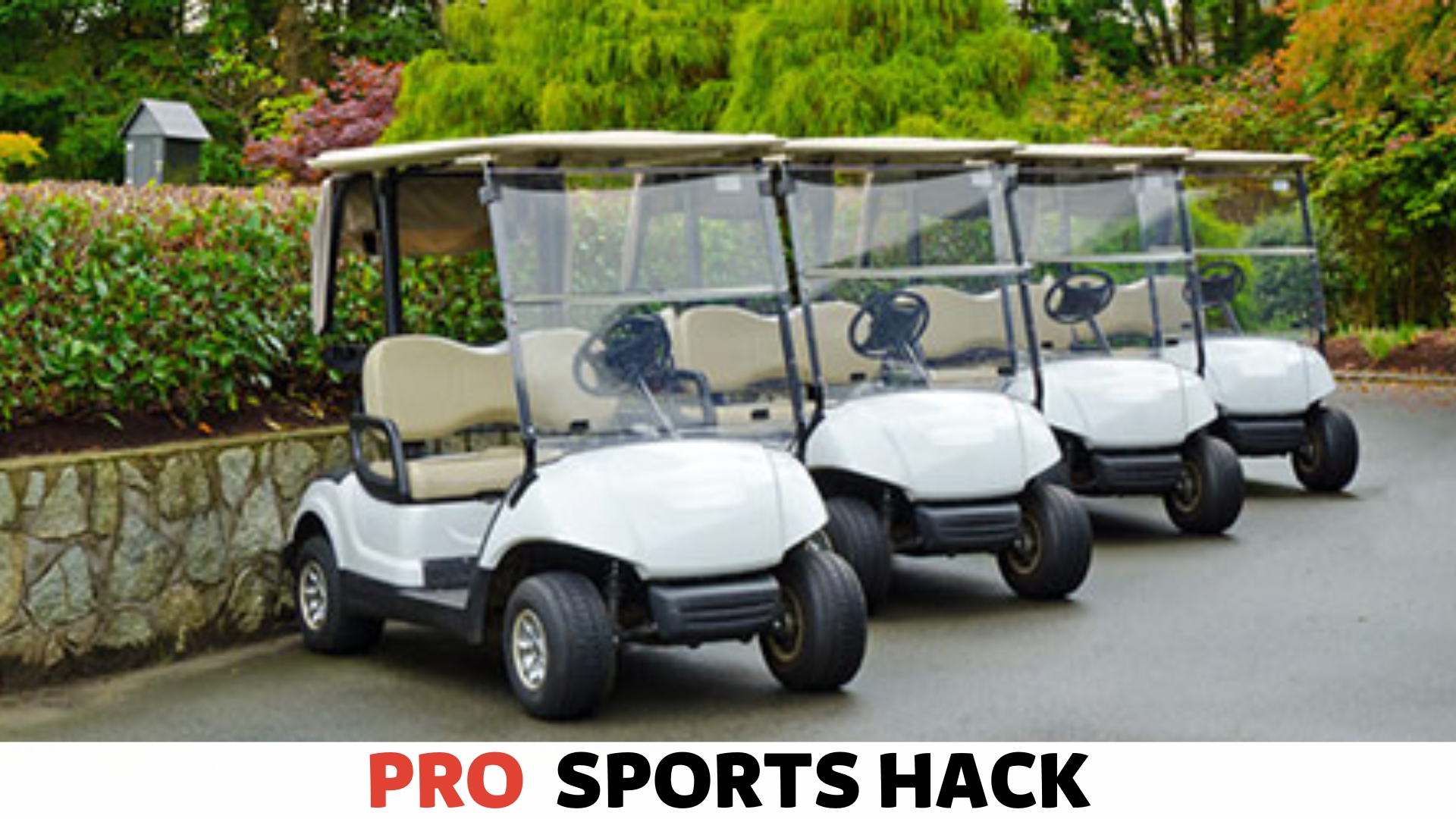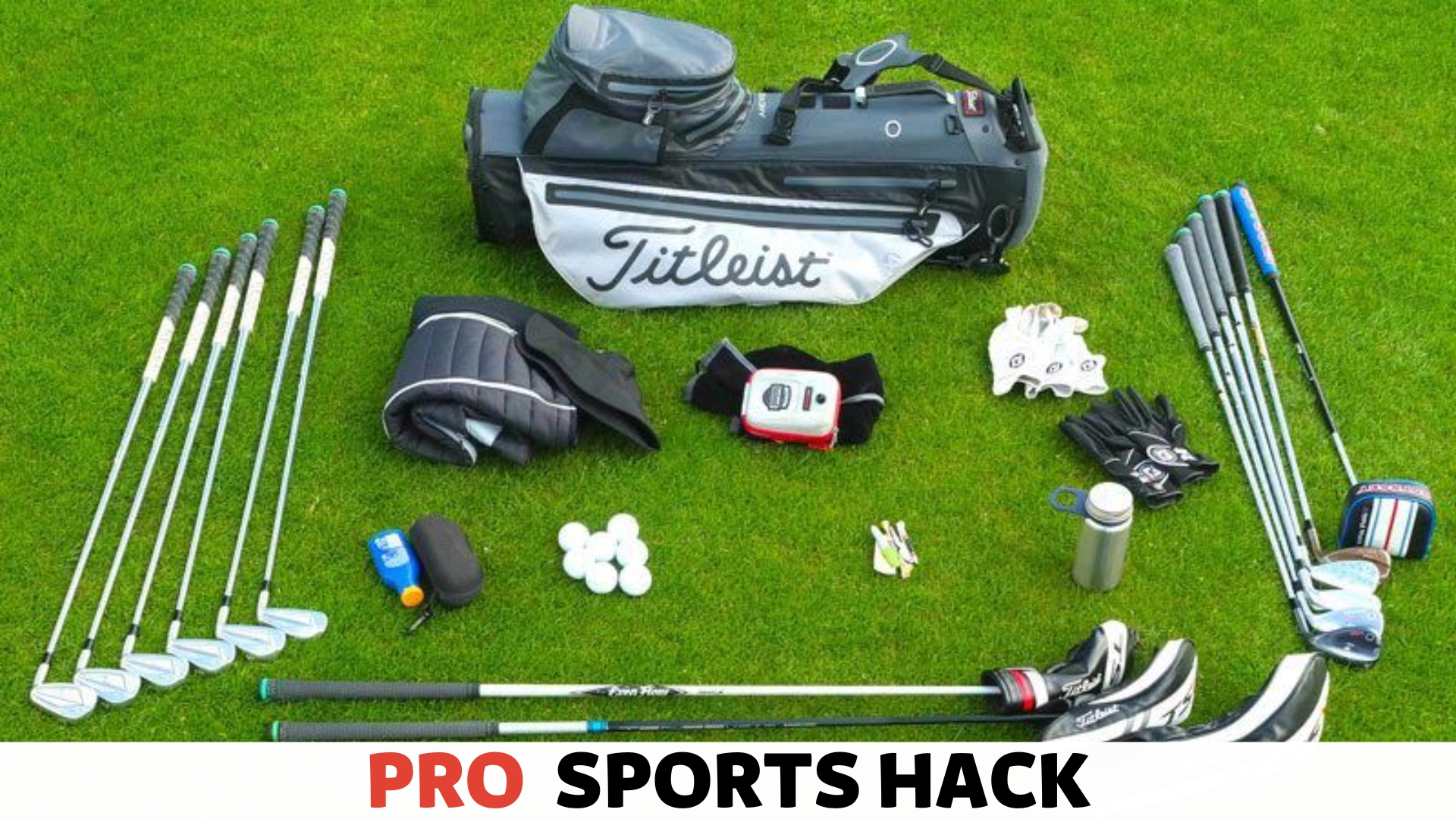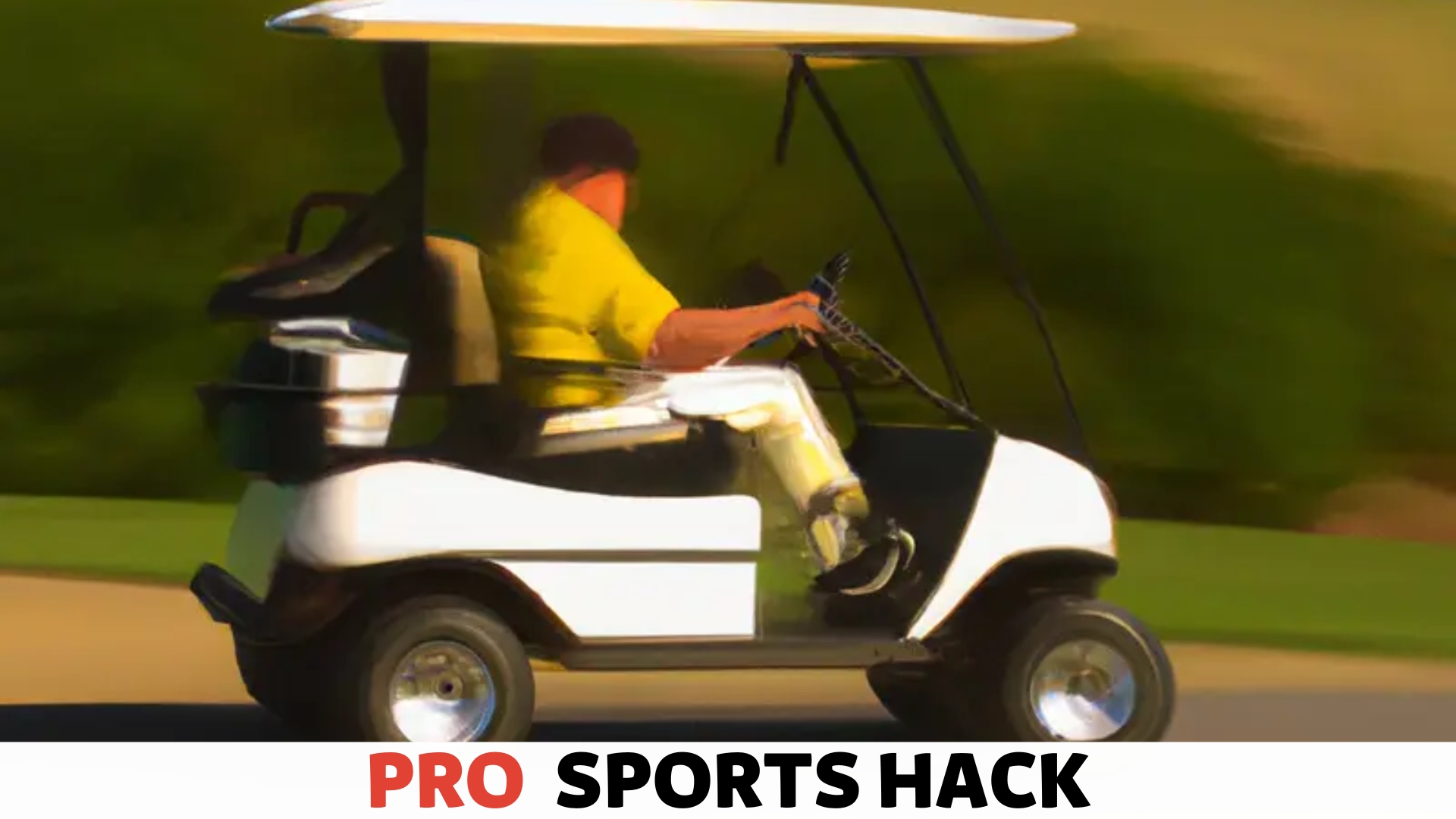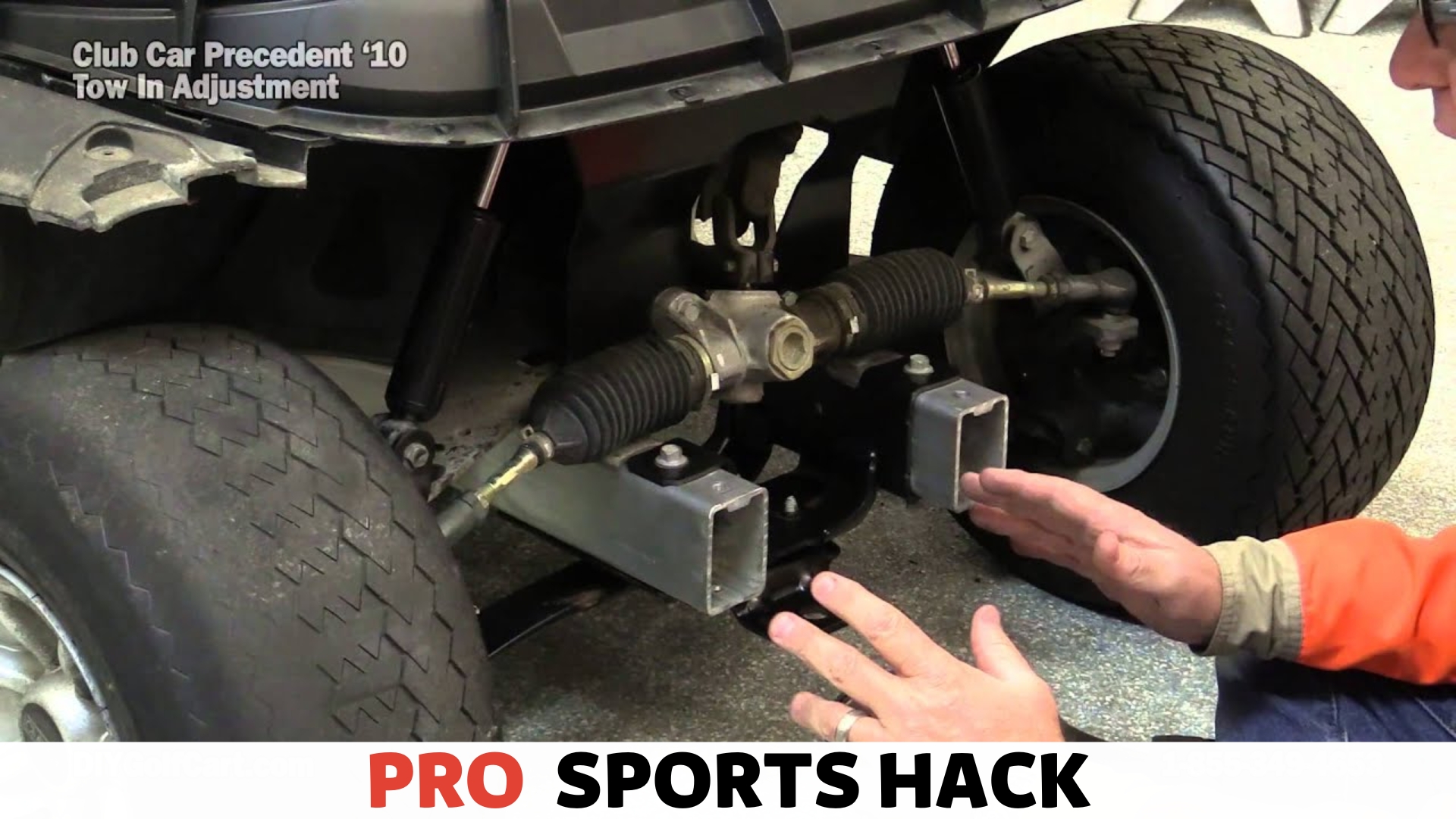
To align your grip with the club face, place your hands on the club in a neutral position, ensuring they are parallel to the target line. Now, let me explain further.
Aligning your grip with the club face is crucial for a consistent and accurate golf swing.
When gripping the club, ensure the V between your thumb and index finger points towards your right shoulder for right-handed golfers (or left shoulder for left-handed golfers).
This will help square the club face at impact, leading to straighter shots.
Additionally, check that your grip pressure is firm but not too tight, allowing for proper wrist hinge and club control throughout the swing.
By understanding and implementing these grip alignment techniques, you can improve your golf game and achieve better results on the course.
Understanding the Importance of Grip Alignment
Importance of Aligning Grip With Club Face
Understanding the importance of grip alignment is crucial for any golfer looking to improve their swing mechanics and achieve consistent ball flight.
The grip is the only connection between the golfer and the club, making it a fundamental aspect of the golf swing.
Aligning your grip with the club face sets the foundation for a solid swing and can significantly impact the outcome of your shots.
Impact on Swing Mechanics and Ball Flight
Aligning your grip with the club face affects your swing mechanics and ball flight. A proper grip alignment ensures that the club face is square to the target at impact, resulting in straighter shots and more consistent ball flight.
When the grip and club face are misaligned, it can lead to unwanted shot shapes such as slices or hooks.
When your grip is aligned correctly, it helps maintain the desired swing plane, allowing you to generate more power and control throughout the swing.
This alignment also promotes consistent contact with the club’s sweet spot, optimizing energy transfer from the club to the ball.
Grip alignment is especially crucial for achieving the desired ball flight. By aligning your grip with the club face, you can influence the amount of loft on the club at impact.
For instance, a grip that is too strong (turned too far to the right for right-handed players) can cause the club face to close, resulting in lower loft and shots that fly left of the target.
On the other hand, a grip that is too weak (turned too far to the left for right-handed players) can open the club face, leading to higher loft and shots that veer right.
Proper grip alignment can also help in promoting consistent shot alignment. When your grip aligns with the club’s face and target, it is easier to aim the club accurately.
This ensures better consistency in shot direction and minimizes the need for compensations during the swing.
In conclusion, understanding the importance of grip alignment is essential for any golfer looking to improve their swing mechanics and achieve consistent ball flight.
By aligning your grip with the club face, you can optimize your swing mechanics, promote consistent shot alignment, and influence the direction and trajectory of your shots.
Take the time to focus on grip alignment, and you will see significant improvements in your golf game.
As you focus on improving your golf game, don’t overlook the importance of enhancing your equipment; explore our guide on “How to Boost 36V Golf Cart Speed” for insights into maximizing your cart’s performance on the course.
Common Mistakes to Avoid
Gripping Too Tightly
One common mistake golfers often make when aligning your grip with the club face is gripping too tightly. Gripping the club excessively can restrict your wrists’ movement and lead to tense and rigid swings.
It can also reduce your ability to control the club face and result in wayward shots. Therefore, ensuring a relaxed and light grip on the club is important.
A softer grip allows for better wrist movement, enabling you to optimize your swing and achieve proper alignment.
Incorrect Hand Placement
Another mistake to avoid when aligning your grip with the club face is incorrect hand placement. Your hands play a crucial role in determining the position of the club face at impact.
Placing your hands too far forward or too far back can lead to inconsistent shots and misalignment. To avoid this, ensure your hands are placed in a neutral position, directly in line with the club face.
This will help you maintain control over the club face throughout the swing and achieve better alignment with each shot.
Neglecting to Check Alignment Before Every Shot
One of the most important aspects of aligning your grip with the club face is regularly checking your alignment before every shot. Neglecting to do so can result in poor shot accuracy and inconsistency.
To avoid this mistake, develop the habit of stepping behind the ball before each shot and visually aligning the club face with your target. Pay attention to the club’s squareness and the alignment of your feet, hips, and shoulders.
Taking a moment to verify your alignment can make a significant difference in the outcome of your shot, allowing you to hit the target and improve your overall game consistently.
Proper Grip Alignment Techniques
The proper grip alignment is crucial for a golfer to achieve optimal control and consistency with their shots. Many golfers overlook the significance of grip alignment, but it plays a pivotal role in ensuring a square clubface at impact.
In this article, we will delve into some effective grip alignment techniques that can improve your game and help you hit straighter shots.
Hand Position and Grip Pressure
The first step towards proper grip alignment is to ensure correct hand position and grip pressure.
When gripping the club, your left hand (for right-handed players) should be placed comfortably on the club handle, with the thumb resting just to the right of the center.
Your right hand should be placed below the left, interlocking or overlapping the fingers.
When it comes to grip pressure, finding the right balance is essential. Gripping the club too tightly can inhibit the natural movement of the wrists and lead to tension throughout the swing.
Conversely, gripping the club too loosely can cause a lack of control. Aim for a medium grip pressure, allowing for a relaxed but secure grip on the club.
Alignment Aids and Visual Cues
In addition to proper hand position and grip pressure, alignment aids, and visual cues can greatly assist in achieving correct grip alignment. These aids provide references that help golfers align their hands and clubface consistently.
One popular alignment aid is a grip alignment stick or grip trainer. These tools are designed to be placed between the hands, providing a visual reference for correct hand placement.
Golfers can develop muscle memory for proper grip alignment by using a grip alignment stick during practice.
Visual cues can also be beneficial in aligning the grip. Some golfers find it helpful to imagine a straight line extending from the clubface through their hands and up their arms.
This mental image can assist in visualizing the proper alignment and promoting a square clubface at impact.
Another visual cue is using alignment markers on the club handle. These can be small lines or dots that help guide hand placement for consistent grip alignment.
By aligning your hands with these markers, you can ensure a square clubface and minimize the likelihood of shots veering off target.
Proper grip alignment is vital for any golfer seeking to improve their game.
By focusing on hand position grip pressure and utilizing alignment aids and visual cues, you can enhance your consistency and accuracy on the course.
So, take the time to master these techniques and unlock the true potential of your golf swing.
Efficiency on the golf course goes beyond your swing – discover the strategic advantages of proper club organization with our comprehensive “A Golfer’s Guide to Optimal Golf Bag Club Placement,” ensuring you have the right club at your fingertips for every shot.
Neutral Grip Position
The grip is one of the most crucial aspects of a golfer’s technique. It lays the foundation for a solid swing and can greatly impact the direction and trajectory of the ball.
Achieving a neutral grip position is the key to optimizing your swing and ensuring maximum control over the club face. To achieve a neutral grip, let’s dive into the proper hand and finger placement technique.
Proper Hand and Finger Placement
When it comes to achieving a neutral grip position, proper hand and finger placement is vital. Follow these steps:
- Start with the left hand: For right-handed players, the left-hand plays a significant role in establishing a neutral grip. Place the club in your left hand, positioning the grip diagonally across the fingers. The grip should extend from the little finger’s base to the index finger’s first joint.
- Position the V: As you grip the club, pay attention to the “V” shape formed between your thumb and index finger of your left hand. This “V” should point towards your right shoulder or just outside your right ear. This alignment promotes a square club face at impact.
- Wrap your fingers: Wrap your fingers securely around the grip, ensuring a comfortable but firm hold. Avoid gripping too tightly, restricting your wrist movement, and decreasing club head speed.
- Interlock or overlap: Choose the grip style that suits you best – interlocking or overlapping. Interlocking involves interlocking your left pinkie finger with your right index finger while overlapping requires your right pinkie finger to lay on top of (or overlap) the left index finger.
- Repeat on the right hand: Now, it’s time to position the right hand. Place the right hand on the grip below the left hand, aligning your palms parallel to one another. The grip should rest more in the fingers of the right hand than in the palm.
Following these steps, you can achieve a neutral grip position, ensuring the club face remains square and aligned with your target.
A neutral grip allows for greater control and consistency in your shots, enhancing your overall performance on the golf course.
Varying Grip Techniques for Different Shots
One of the key elements to having a solid golf swing is aligning your grip with the club face. However, it’s not a one-size-fits-all approach. Depending on the shot you want to make, you may need to adjust your grip technique.
In this section, we will explore how to vary your grip for different shots, considering the type of club you’re using and the desired shot shape and distance.
Adjusting Grip for Different Clubs
Each golf club in your bag serves a different purpose and requires a slightly different grip. Here are some general guidelines for adjusting your grip based on the club you’re using:
- Driver: When using the driver, you want to maximize distance. You should use a relatively neutral grip with both hands to achieve this. This means that both thumbs should be positioned more towards the target side of the grip, allowing for a more open club face at impact.
- Iron shots: Iron shots require accuracy and control. For shorter irons, such as wedges, you can use a slightly stronger grip by rotating both hands slightly to the right (for right-handed golfers). This helps promote a more controlled shot with less spin. As you move towards longer irons, you can gradually lessen the strength of your grip.
- Woods and hybrids: Woods and hybrids are designed for distance and consistency. You should maintain a neutral grip similar to the driver’s to achieve optimal results with these clubs. However, it’s important to remember that different hybrids and fairway woods may have varying shaft lengths and club face designs, requiring slight adjustments in grip pressure and positioning.
Account for Shot Shape and Distance
In addition to adjusting your grip based on the club you’re using, you should also consider the shot shape and desired distance. Here are some points to keep in mind:
- Draw (right to left shot): To hit a draw, where the ball starts right off the target and curves back left (for right-handed golfers), you may want to consider using a slightly stronger grip. This can help close the club face at impact, promoting a right-to-left ball flight.
- Fade (left to right shot): Conversely, if you aim for a fade, where the ball starts left of the target and curves right (for right-handed golfers), a slightly weaker grip may be beneficial. This can help keep the club face more open at impact, promoting a left-to-right ball flight.
- Distance control: For shots that require precise distance control, such as pitches and chips around the green, you can experiment with altering your grip pressure. Lightening your grip pressure can help you generate less power and more control while increasing your grip pressure can generate more power for longer shots.
By varying your grip technique for different shots, you can optimize your performance on the golf course.
Remember, these are general guidelines, and it’s important to find what works best for you through practice and experimentation.
Incorporating these grip adjustments into your game can help you achieve the desired shot shapes and distances.
Drills and Exercises for Improving Grip Alignment
Proper grip alignment is crucial for ensuring a consistent and accurate golf swing. When your grip is aligned correctly with the club face, it can lead to straighter shots and improved control.
However, perfect grip alignment may require some practice and drills to train your hands and fingers.
In this section, we will explore some effective drills and exercises that can help you improve your grip alignment and take your golf game to the next level.
Grip Pressure Drills
One common issue that golfers face is applying too much or too little grip pressure, leading to inconsistent shots. To improve your grip pressure and ensure proper alignment, try the following drills:
- Squeeze and Release: Grip the club with your normal grip pressure, then gradually increase it until it feels tight but comfortable. Hold this grip for a few seconds, then slowly release the pressure. Repeat this drill several times to train your hands to find the right grip pressure.
- Soft Grip: On the other end of the spectrum, practicing a soft grip can also help improve grip alignment. Take a light grip on the club, almost as if you were holding a delicate object. Swing the club with this light grip, focusing on maintaining control and alignment throughout your swing.
Alignment Check Routines
Regular alignment checks can help ensure your grip is aligned properly with the club face. Here are a few routines you can incorporate into your practice sessions:
- Mirror Alignment: Set up before a mirror and take your normal grip. As you address the ball, pay attention to the alignment of your hands and club face. Use the mirror to confirm your grip with the target line is square. Make any necessary adjustments until you achieve proper alignment.
- Alignment Stick: Place an alignment stick or club on the ground parallel to the target line. Take your normal grip and position yourself as if you were about to hit the ball. Ensure that your hands and club face align with the alignment stick. This visual aid can help you easily identify any grip alignment issues.
You can train your hands and fingers to achieve proper grip alignment by incorporating these drills and exercises into your practice routine.
Remember to practice regularly and stay patient, as developing muscle memory and establishing a consistent grip may take time. With improved grip alignment, you’ll have more control over your shots and improve your overall performance on the golf course.
Importance of Consistent Practice
In golf, one of the fundamental aspects of a successful swing is the alignment of your grip with the club face. How you hold the club and position your hands directly influences the direction and accuracy of your shots.
To consistently hit straighter and more powerful shots, it is crucial to practice and refine your grip alignment.
Regularly checking and adjusting your grip during practice sessions and gradually progressing to hitting shots with correct grip alignment can improve your game and gain confidence on the course.
Regularly Checking and Adjusting Grip Alignment During Practice Sessions
During practice sessions, it is important to focus on your grip alignment. Regularly checking and adjusting your grip ensures you maintain a consistent and optimal position for each swing.
Start by placing both hands on the club with the V’s created by your thumbs and index fingers pointing towards your right shoulder (for right-handed golfers).
This neutral grip position helps promote a square face at impact and allows for better club control. Use a mirror or video analysis to assess your grip and make necessary adjustments.
Practice this motion repeatedly until it becomes second nature, ingraining proper grip alignment into your muscle memory.
As you refine your grip alignment, pay attention to the pressure you apply with each hand. Avoid gripping the club too tightly, as it can restrict your swing and result in poor shot execution.
Instead, aim for a comfortable but firm grip for proper clubhead control. Experiment with different grip pressures during practice and find what feels most natural and effective.
Another helpful tip is to grip the club with the fingers of your left hand rather than the palm. This allows for greater wrist hinge and a more fluid club release during the swing.
Be mindful of your thumb placement as well. The left thumb should rest slightly to the right of the center on the grip, pointing towards your right shoulder.
This positioning helps maintain a consistent grip alignment and promotes proper clubface control throughout the swing.
Progressing From Drills to Hitting Shots With Correct Grip Alignment
As you become more comfortable with your grip alignment during practice drills, it is time to transition to hitting shots with the correct grip.
Start focusing on short shots and gradually move towards longer shots as your confidence and consistency improve. During this process, pay close attention to the impact and ball flight.
If your shots consistently veer to the right or left, it could indicate improper grip alignment.
One effective way to reinforce proper grip alignment is to use alignment aids or training tools. These tools position your hands correctly and help you develop muscle memory.
Practicing with alignment aids allows you to fine-tune your grip alignment by providing immediate feedback on your hand placement and pressure.
Remember, consistency is key. Allocate dedicated practice time to grip alignment so that it becomes a natural part of your swing.
Regularly checking and adjusting your grip alignment and progressing from drills to hitting shots with the correct grip, you will develop muscle memory and confidence to strike the ball accurately and powerfully.
Seeking Professional Guidance
When improving your golf game, seeking professional guidance can be extremely beneficial. One aspect of the game that can greatly impact your performance is the alignment of your grip with the club face.
While you may understand how your grip should be positioned, a professional golf instructor can provide valuable insights and techniques to enhance your grip alignment.
In addition, utilizing technology for analyzing grip alignment can take your game to the next level.
Individual Lessons With a Golf Instructor
One of the most effective ways to align your grip with the club face is to take individual lessons with a golf instructor.
During these lessons, an experienced instructor will assess your current grip and provide personalized feedback to help you make the necessary adjustments. They will guide you through proper hand placement, finger positioning, and grip pressure.
By working closely with an instructor, you can address any specific grip issues and develop a grip that optimizes your swing.
Unravel the mechanics behind a smooth ride on the golf course by delving into our guide on “How Golf Cart Transmission With Reverse Works,” providing you with valuable insights into the functionality of your golf cart’s transmission system.
Utilizing Technology for Analyzing Grip Alignment
Thanks to technological advancements, golfers can now access tools and devices to analyze grip alignment in detail. These tools utilize sensors, cameras, and software to provide precise data on positioning your hands and the club face.
By using such technology, you can identify any inconsistencies or misalignments in your grip, allowing you to make the necessary adjustments for more accurate and consistent shots.
For example, a golf swing analyzer can measure various aspects of your grip, including club face position, wrist angles, and grip pressure.
This data can then be used to identify any areas that need improvement and provide visual feedback for better alignment.
Additionally, some golf clubs offer specialized grip analysis systems that use 3D imaging to assess your grip comprehensively.
Frequently Asked Questions
How Do You Align a Putter Grip to Your Face?
Aligning a putter grip to your face involves a few simple steps:
- Hold the putter with the grip aligned parallel to the target line.
- Place your hands on the grip, ensuring equal pressure.
- Position the grip so it’s square to your target line.
- Align the putter face perpendicular to the target line.
- Finally, confirm the alignment by checking if the putter face and grip form a straight line.
How Do You Line Up a Club Grip?
To line up a club grip, follow these steps:
- Align the clubface to your target by holding it straight before you.
- Place your hands on the grip, ensuring they are centered and equal pressure is applied.
- 3. Check that the V’s formed by your thumbs and index fingers point towards your right shoulder.
- Keep your grip firm without squeezing too tightly.
- Ensure your grip feels comfortable and natural for a solid swing.
How Do You Square a Club Face for Grip?
To square a club face for grip, position your hands so that the “V” formed between your thumb and index finger points toward your right shoulder (for right-handed golfers). This helps align the club’s face with the target and promotes more accurate shots.
Does A Strong Grip Open or Close the Club Face?
A strong grip closes the club face.
How Can I Align My Grip With the Club Face?
To align your grip with the club face, make sure your hands match the club’s face angle.
Conclusion
To achieve a perfect grip alignment with the club face, follow these steps: Check your grip pressure, position your hands correctly on the club, align your hands and club face properly, practice proper wrist angle, and maintain a consistent grip throughout the swing.
You can hit consistent and accurate shots by mastering these techniques, improving your overall golf game.
So, go ahead and put these tips into practice on the golf course and watch your performance level soar.




![Cat in the Chrysalis Spoiler: All You Need To Know [Updated] Cat in the Chrysalis Spoiler](https://prosportshack.com/wp-content/uploads/2024/02/Cat-in-the-Chrysalis-Spoiler-100x75.jpg)







